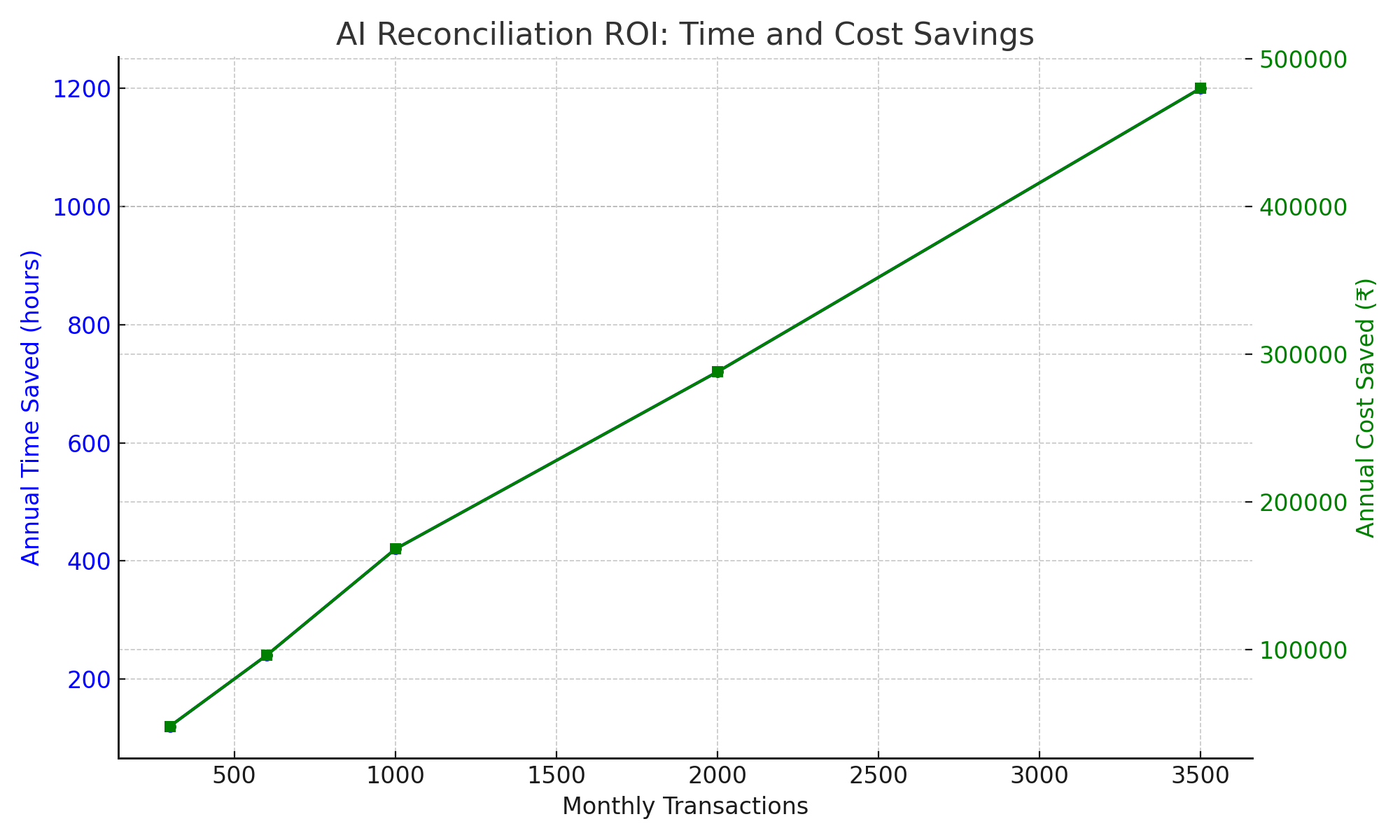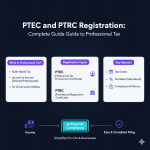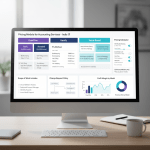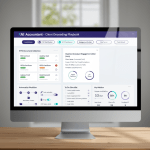Every month-end, Arvind Kapoor dreads a familiar ritual. As the finance head of a mid-sized logistics company in Ahmedabad, he spends days trying to match bank statement entries with his accounting books.
It starts with Excel sheets pulled from different bank portals, then proceeds to painful cross-verification against Tally entries. The numbers never align perfectly. There are duplicate payments, missing receipts, and plenty of manual errors. Each discrepancy triggers a follow-up with operations or sales, stalling the entire close.
“We were always five to seven days behind,” Arvind recalls. “And honestly, by the time we closed the month, the data was already stale and could not get into real analysis.”
How AI Reads Your Bank Statement
Imagine if your bank statement could talk to your accounting system in real-time. With AI-driven reconciliation software, this is now possible.
Here’s how it works: The software reads your uploaded bank statement—PDF, Excel, or CSV—and intelligently parses every line. It understands payees, transaction types, GST numbers, and even category hints from narration fields. Then, it matches these against open invoices, vendor bills, or past entries in your books. For any transaction that doesn’t align, it flags it, suggests ledger codes, or prompts minimal human intervention.
In Arvind’s case, once his company adopted AI Accountant, the month-end chaos subsided. The system auto-ingested statements from HDFC and ICICI, reconciled over 700 entries within minutes, and mapped 90 percent of them to the correct ledgers automatically.
“I now get alerts only for exceptions. I spend more time analyzing, less time matching,” he says.
What AI Reconciliation Saves You: Time, Money, and Focus
Beyond speed and accuracy, AI-powered reconciliation drives tangible financial returns. Most mid-sized Indian companies process hundreds to thousands of bank transactions every month. Manually handling these can take days of an accountant’s time—time that could be spent on analysis, strategy, or growth planning.
Let’s break down what AI reconciliation can save your business:

These numbers aren’t theoretical. They reflect real-world case studies from Indian SMEs that have automated their reconciliation process with AI Accountant. The ROI is not just in rupees saved but in the confidence and calm that comes from always being ready for month-end.
The Right AI Tool for Tally and Zoho Books
If you are evaluating tools in the Indian market, here are a few essentials to look for:
- Multi-bank compatibility: Ensure the tool reads statements from all major Indian banks including SBI, Axis, Kotak, HDFC, ICICI, Yes Bank, and cooperative banks.
- Regional compliance awareness: The AI should understand GST bifurcations, TDS deductions, and local transaction types. For instance, mapping UPI entries to specific invoice IDs or recognizing GST RCM cases.
- Narration field intelligence: Indian bank narrations are messy. Good software should extract meaning even from semi-structured descriptions like “NEFT to Ramesh Kumar INV#2097.”
- Audit trail and review flow: You should be able to see what AI matched, what it guessed, and what it left for human review. Transparency is crucial.
- Integration readiness: Whether you use Zoho Books or Tally, the system must create journal entries that push seamlessly into your ledger.
Getting Started with AI Reconciliation
Most Indian SMEs worry about switching costs and change management. Here is a phased approach that works:
- Start with a single bank: Pick your largest bank account and test the reconciliation flow for one month. Upload statements, observe match rates, and validate ledger entries.
- Enable exception reporting: Focus on entries that remain unmatched. Use this to improve your upstream invoice and bill tagging processes.
- Map internal owners: Assign someone to review exceptions every week. This habit reduces end-of-month stress.
- Integrate with your books: Once confidence builds, link the system with Tally or Zoho Books for seamless entry creation.
- Scale to all banks and months: Gradually add more accounts and historical data. Within a quarter, you can have a fully reconciled system across all accounts.
The Close, Reinvented
Bank reconciliation should not be a bottleneck. With AI, it becomes an invisible background process—quietly organizing your financial backbone.
Arvind now finishes month-end reports within two working days. His CEO has real-time dashboards. And his finance team has shifted from back-office to boardroom, finally focusing on strategy, not spreadsheets.
If your business runs on Tally or Zoho and struggles with delayed closes, AI Accountant offers the only Indian tool that ingests bank statements, matches to books, and posts to ledgers. No manual matching, no formatting chaos.
Financial close should bring clarity, not chaos. Let AI Accountant show you the faster path.




